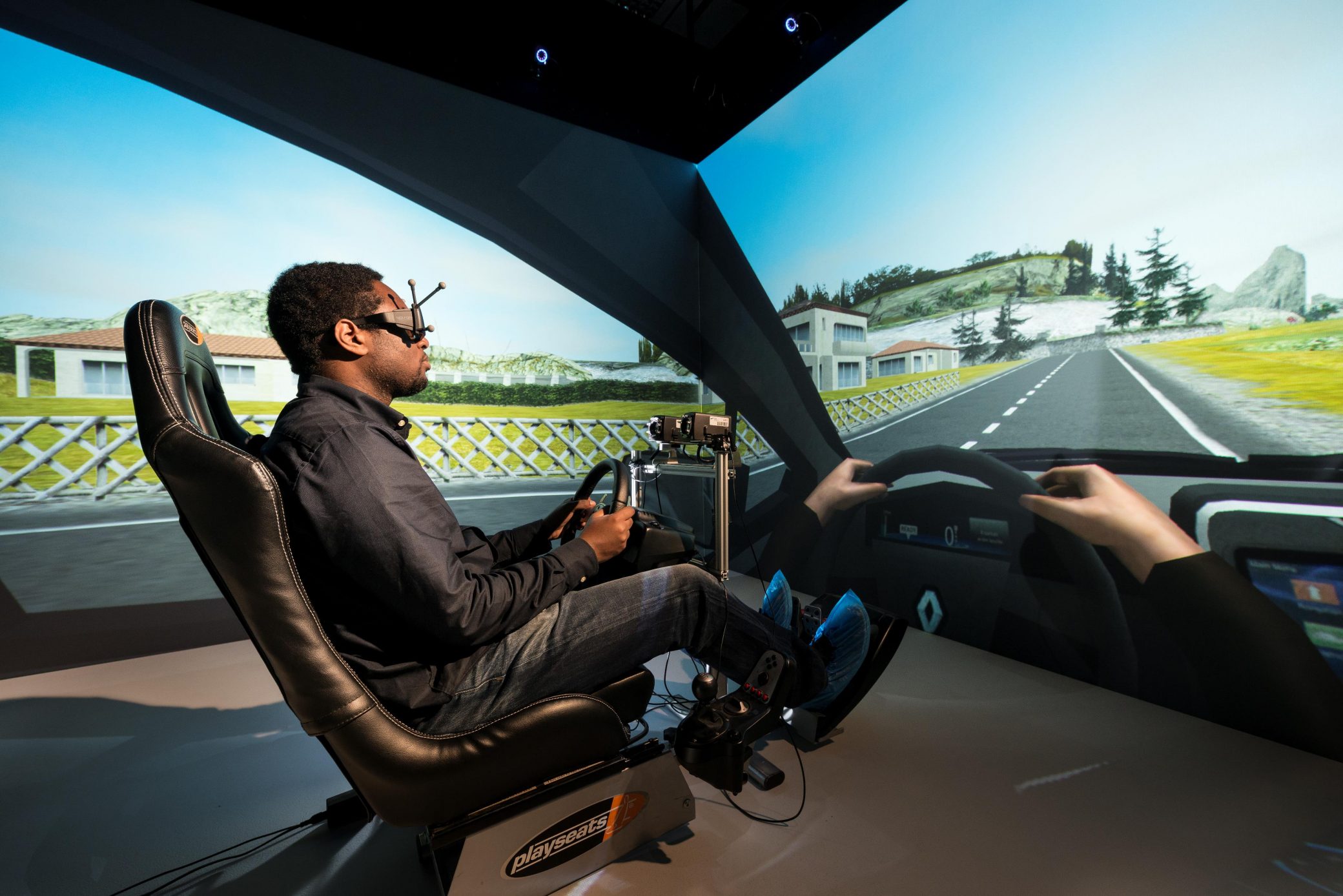
Duncan Proctor talks to Antycip Simulation commercial development manager John Mould to find out about the trends, opportunities and challenges for those working in the AR/VR world.
Last November saw the opening of Antycip’s new UK demo centre in Oxfordshire, following the launch of a similar centre in Saronno, Italy. Created in partnership with Barco, the facility provides the company with the opportunity to showcase its VR and simulation capabilities and demonstrate the bespoke solutions it can offer to customers. Installation was invited along to see how the integrator’s offering has evolved and to speak to the management team about how Antycip views the state of VR/AR.
What sectors do you think offer the greatest opportunities for VR/AR?
We have spent a lot of time looking at the automotive space and we’re seeing that there is a lot of active interest there. Traditional design review, digital mock-up, there are sectors like oil and gas – we sold an oil and gas virtual reality theatre last year to Heriot-Watt University. Retail is another area; I think we see a lot of applications for retail simulation and applications that can be used in VR spaces.
And what about higher education?
We’re still doing a lot of that work; we’re putting in our theatres and putting in different VR technologies into universities. I think the funding for those seems to be more prolific in France from what I can see; it seems like the French government at the moment are ploughing more money into funding research in universities. Perhaps we don’t see that over here so much, and maybe Brexit is causing people to think, ‘Well, how are our universities going to acquire European funding in the future?’ So does that mean the universities will suffer by not being able to acquire the funding for that type of high technology? Will our government step in and try to give money then in the UK?
Sometimes customers have unrealistic expectations of what VR can do for them
How have these technologies evolved over the last few years?
I think the biggest thing for us is we need to educate people about how easy it can be getting into VR. In the past, people used to look at VR and say, ‘I’ve got applications and needs that would suit a 3D environment, but the effort in engineering to take my data, my project, and bring that to VR has been too much.’ There’s been a lot of engineering time wasted doing this whole exercise of taking your data from the starting point and then being able to step inside your virtual worlds with your data.
What we’ve seen now with people like TechViz, who we represent, is they’re making that easy. VR has become easy suddenly, because we’re doing this open GL video interception, so we’re able to have customers run the applications that they use day-in, day-out. And we can bring their data instantly into VR with no file export, no translation, no optimisation. So VR is easy now. That’s a big change.
How do you see the relationship between the consumer and business sides of VR and AR?
There hasn’t been a rush of people coming out to buy those home use devices yet, which is probably not what the manufacturers were expecting. I think it might be a bit like that phase when everyone wanted 3D televisions and people were gaming at home on their Sony PlayStations in 3D. I’ve done it myself – I bought a 3D television, but have I watched it that much since? No I haven’t. I think that died off a little and they haven’t had the boom of the home user… that’s my feeling.
The business side of it has always been steady, VR theatres we’ve been doing for 15 or so years – for universities, for commercial clients. We’re doing more and more of that especially in our French offices, we’re doing a lot of CAVEs, power walls, things like that, so business certainly sees the advantage of VR at the high end.
Is there interest for consumer kit from business customers? Yes, we’re seeing a bit of that, but it’s not an area anyone can really make a lot of money out of. If you’ve got a £600 HTC Vive display, you’re not able to make much money out of selling a display like that to a business. At the end of the day, the margins just aren’t there for an integrator to do that.
Where you’ve got to focus is a few steps up from that. It might be an accessory – something to add to a larger system, that might have a place in the world we play in; but at the moment consumer kit is too low-cost and low-end for us to make a business case around, unless we’re able to sell a software package or something that really leverages that technology.
Do you think enough integrators know about VR/AR and its potential?
There are a lot of people playing within our space, and I see new companies emerging all the time. Some people focus on tracking systems, some focus on software content, some on display like us. I haven’t met one that’s as unique as we are, in terms of having all the areas covered, but some are focusing more in certain areas than we are. We’re not doing so much in the dark ride technologies and the entertainment realms, but we’re doing more in the commercial space and more in the military space.

With its complexities, are there a lot of potential pitfalls for companies looking to get into VR and AR?
It always comes down to: who is the customer? What is their objective and focus? What are they trying to achieve? What do they think VR can achieve for them, relevant to their business?
And for us, we want to qualify that and understand that and to apply a solution that meets their operational objectives and their price performance. With people like TechViz behind us, the fact that we can leverage over 200 industry-standard applications – it’s a different world to how it used to be.
Because we have this ability to easily get into VR, anyone who comes to us, no matter what application they’ve got, there’s probably a route to get into VR very easily and quickly. We just need to understand their objective and what they need to achieve with the VR, but people don’t know that these technologies exist.
VR is a lot easier than it ever used to be, but we need to evangelise more as a company and get out that word to organisations so they understand it. You run your application here on your existing PC, we’ll put a network cable in, we’ll drop some software onto your box, we have a render station with a PC and we’re able then to take in the visual content from your application and put that into VR instantly.
It’s a different way of looking at the whole paradigm. There are companies competitive to Antycip who are still doing the traditional thing of making money out of generating an application in-house that they’ll charge you a licence for. It may be cost-effective compared to buying TechViz, but it’s a vehicle that you have to import data to, and you have to be an expert to use it.
Where do you see the balance between the supply and demand of VR and AR?
I think there is a big hunger and demand for these applications certainly, but sometimes the budgets aren’t there for them to realise what they want to achieve with the technologies or sometimes customers have unrealistic expectations of what VR can do for them.
For Antycip as a company, where are you looking to be in the short-to-mid term?
Our parent company wants us to continue to grow and we’ve been on a path of growth for the last few years. We’ve been very successful in growing and being profitable, and we’ve seen other companies in our space come and go over the time we’ve been operating.
The future for us is to do more and more of these immersive displays and to find more and more interesting opportunities. The customer who wants the weird and wonderful immersion experience, the customer who wants something that perhaps hasn’t been done in projection and display before, maybe it’s a technology first that they are looking for. We want to do more and more of that sort of work – embrace these bigger projects where it really challenges us to help that customer achieve that goal. There’s some unique work out there that we’ve done – not a lot I can tell you about – but we have done some really special things.
Second picture: Heudiasyc







